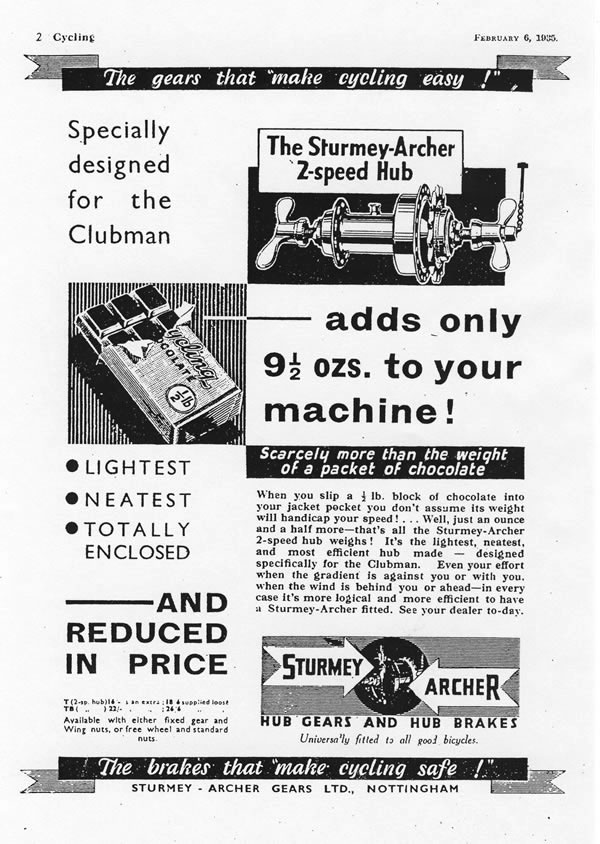

In 1934, the Hercules Cycle Co launched an full-on export campaign with a fabulous full colour ‘Hercules Cycle Magazine’ portraying all the Hercules models in typically English settings. The features are reminiscent of a Hollywood film magazine and the locations similar to a movie set. The catalogue was a great success, particularly in America. Though Raleigh’s brochures were also well-produced, the 1934 Hercules brochure is the most dynamic bicycle catalogue ever presented to the public.
By presenting it as a ‘cycle magazine’ the company was able to use it in conjunction with subsequent years’ sales catalogues which, in turn, were quite basic folded brochures.
The genius of Hercules was to build basic bicycles to a high standard but at low cost, but spend a lot of money on presentation. The ‘Model QD’ you see here epitomises this: a superbly built heavy duty machine, with double top tube and 28″ wheels …but low (22 inch) frame. It is plastered with Hercules transfers (decals), components such as the handlebar and front hub bear the company name, and HERCULES is spelt out within the chainwheel (sprocket). Every Hercules was a mobile advertising board for the company.


1937 Hercules ‘Model QD’
Double Top Tube
Sturmey-Archer TF7 Two-Speed (Freewheel)
22″ Frame
28″ Wheels
Frame No BV 6852
(Now sold)

Hercules was on a roll in the second half of the thirties. The world was recovering financially and exports were booming. With the success of their 1934 catalogue, they extended their model range the following year to try out variations such as the ‘Model QD’ which could be ordered in anything from 18 to 26 inch frame sizes. No other British cycle maker offered such a choice. In addition, a customer could specify the recently introduced Sturmey-Archer two speed gear.


These days, it’s rare to find a bicycle fitted with the Sturmey Archer Two-Speed ‘TF’ Gear. This example is market ‘TF7’ suggesting a 1937 version. As Tony Hadland points out in The Sturmey-Archer Story, it was ironic that the company had to introduce a two-speed because of market demand when their original success (c1904) was largely due to their reliable three-speeds replacing the two-speed gears of the day.
Though it’s not mentioned elsewhere, my personal feeing is that there was a need for a two-speed coaster because of increased exports to the USA, where a coaster brake was fitted to every bike. A two-speed coaster was therefore a de luxe item. The ‘T’ two-speed, meanwhile, was in demand from the British and European market; being a much lighter gear than a three-speed, it was ideal for lightweight machines.
An interesting aspect of the two-speed gear is its trigger (below). Whereas a three-speed trigger shows LOW-NORMAL-HIGH, the two-speed only has LOW-NORMAL.

This machine is in superb unrestored original condition. The paintwork still shows its original box lining. Some of the (many) transfers are faded, but most are readable. The chrome is in good condition. I fitted a Hercules inflator pump (for display only, needs repairing). The Brooks ‘C3’ Three-Coil leather saddle is worn but usable.
I bought this Hercules from one of my mechanics. As is his habit, he had taken everything apart, cleaned, serviced, repaired where necessary, and rust-proofed. The two-speed gear works very well. The only fault I can find is that the gear trigger lever is bent over; this is such an ultra-rare item that we are too scared to try to bend it back in case it breaks.
The Hercules is a pleasure to ride.

























1933-1939 STURMEY ARCHER ‘TF’ TWO SPEED GEARS

























1934 HERCULES CYCLE MAGAZINE







































































